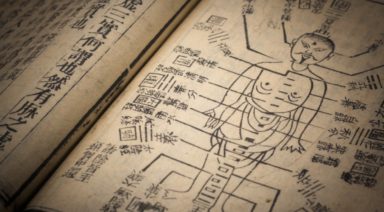Raise the Frequency of Your Vibrational Energy With These Tips

Sometimes the key to rejuvenating ourselves is something more than the physical eye can see. Our vibrational energy affects our daily lives well into our bodies, hearts and spirits, as well the people and universe around us, so maintaining the level is essential. Here are a few suggestions to help keep your vibrations at their peak:
Spend Time with High Frequency People, Places, and Things
Just as negative people can mess with the positive energy in your home, being around negative people can mess with your personal energy. Find people that are sources of positivity and light, and only let these kind of people get very close to you. The less time you spend with negative energy, the better. What’s more is that it’s refreshing and strengthening to spend time with people with similar passions and interests who will encourage you rather than skeptically question your new hobbies. Finding a teacher who will guide and mentor you is essential, as well.
Watch What You’re Eating
Paying attention to what you eat has a bigger impact that just dieting and nutrition. Food is an energy source, which has the power to take your energy up or bring it down. So put only goodness into your body! Not all of it is created equal. Some foods are very low in vibration, sometimes even negative in their energy, and shouldn’t be eaten regularly. This includes refined white sugar, refined white flour, preservatives, pesticides, chemicals, fried food, most non-organic meats, and non-organic dairy products. Want to take it to the next step? Completely remove meat and dairy from your diet for optimum health and higher frequency, and to avoid ingesting the energies of animals that were very likely abused, mistreated or suffering.
Make Compassion a Priority
Put positive energy into your life! When you uplift other people, you take more responsibility for the energy you radiate. You’re more aware and conscious of what your energy looks like, and where its level might be. What’s more is that the frequency of love is an extremely high-vibrational frequency, making you a magnet for more positive relationships and experiences.
Meditation
Giving yourself time to slow down and recenter your heart on what’s important is absolutely incredible. Wake up a little earlier, or carve out some time before bed to reset your frequencies through meditation. A lot of the time, all the negative issues from our day weigh us down before we fall asleep, so this can be a great segue to an excellent night’s sleep. The other angle is strengthening your heart, getting it ready to face a world of negativity, and increasing your positive vibrations beforehand. Try both and see what works best for you!
Exercise
Just because you’re catering to an internal rhythm doesn’t pardon you from taking care of your external one! Physical movement is actually very important. It not only encourages energy to move through and oxygenate your brain, it also stimulates the release of endorphins, which are frequency-elevating chemicals. Finishing a good workout makes you feel great, and when you feel great it’s easier to dive headfirst into joy! You definitely need to make sure that the exercise is one that you love, so you can put your whole heart into it and make it a truly positive experience.
How to Activate Your DNA and Unlock Dormant Potential

Have you ever felt as if you’re not living up to your full potential? Or have you felt that brief flash of genius you know is lying dormant within but don’t know how to access it regularly? Of course, you have. It’s something we’re all familiar with and likely experience on a regular basis. And according to the theory of DNA activation, there are ways to clear these energetic blockages and access your true potential.
The double helix DNA structure most of us are familiar with is encoded with copious amounts of information. In fact, DNA can be used to store more data than any artificial medium – so much so that all the data ever recorded by humans could fit into a container the size and weight of a few pickup trucks.
Though our DNA contains such large amounts of data, the vast majority of it is considered extraneous by geneticists who regularly study it. Some refer to this 97 percent of DNA as non-functioning or “junk DNA.”
What if this data isn’t junk but actually encoded with information whose function has yet to be discovered? And what if there are more than two strands of DNA, but instead, up to 12 potential strands lying dormant in a subtle energy spectrum? Wouldn’t you want to activate them?




































